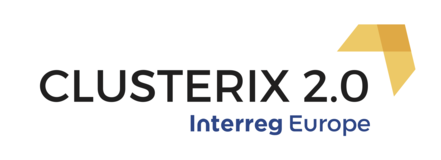On December 19, Flanders Innovation and Entrepreneurship hosted in Brussel a stakeholder meeting for cluster. With the new year just ahead, we inspired our Flemish cluster organizations with tips and tricks for a successful branding and marketing of their cluster. During the learning network for cluster organizations on 19 December we were looking for answers to a serie of questions: What is the difference between branding and marketing? What are the challenges of branding and marketing a cluster?
The numerous attendance made it immediately clear: everyone knows that a good brand and associated marketing are essential for any organization that wants to put itself in the spotlight and wants to reach its target groups in an effective way. But exactly how you do this, that is a lot less clear. For cluster organizations, the 'Handbook on Cluster Brand Management' is a good guide for this. But because self-study is often not the most appropriate way to arrive at great insights, we asked Marcus Andersson, CEO of Future Place Leadership and co-author of the handbook, to share his knowledge and expertise with our cluster managers.
Branding starts with finding the 'raison d'être'
First of all, we got more insights in what branding and marketing exactly is and how both activities relate to each other. Branding is about creating your own unique identity and finding answers to questions such as 'Who are we? What makes us unique? What kind of input is required"It is also about explaining the reason of existence of the cluster. Cluster branding starts after finding the reason that makes the cluster distinctive from the other players in the field. Once this reason is found, it will be the starting point for the marketing of in using all sorts of marketing tools. Branding and marketing are therefore closely linked, but marketing without having a good brand makes little sense.
To set up their own brand, it will certainly require dedicated resources of the cluster. Due to the many different stakeholders with different interests and interests clusters have to deal with, the branding of the cluster is challenging. In order to ensure that each of these stakeholders develop a strong connection and identity with the cluster, it is advised to involve the stakeholders in the development of the brand and the associated process. The brand of a cluster is mostly the largest common denominator on the interface between these different stakeholders. Notwithstanding the great effort, it is worth the challenge. Research with existing clusters shows that an own, distinctive cluster brand makes it easier to attract new members, new talent and new capital and to enter into partnerships at both regional and international level.
How to do it?
On the basis of inspiring and imaginative examples - with the most eye-catching example the Polar Bear Pitching that takes place every winter in Oulu (Finland) as a topper - we have learned four principles that are essential in cluster branding and marketing:
1. remember that it is not just about 'you', but be relevant in the context of the cluster and its environment;
2. innovation makes the difference, dare to think out-of-the-box when setting up marketing campaigns;
3. show, do not tell and make clear what the cluster stands for via concrete actions;
4. do co-created marketing through ambassadors who do the marketing for you.
The challenge is high, but applying these principles will certainly contribute to any organization improved visibility? In a world where everyone is buried with information, transcending the gray mass and sharing your message with those you want to reach. For cluster organizations the challenge is even higher, as they usually have (very) limited resources and manpower to spend on their communication and marketing. On the basis of a number of striking examples, a number of tools have been illustrated that have proven their value for clusters and are also cost-effective. For example, storytelling, living your brand by effectively applying the values that are part of your brand, facilitating the co-marketing through your cluster actors by offering toolboxes with marketing material, content marketing, ...
To work
The participants were also given the opportunity to work with the new insights and proposed principles and were offered a number of challenging exercises in two workshops: one focusing on the process of the branding and marketing strategy and one looking at the drawing up of an action plan to implement the strategy. That the exercises were useful and also given food for thought is clear from a number of reactions: With one day of training, no ready-made answer can of course be given to how you, as a cluster, develop your own eyecatching brand and accompanying marketing plan. But as one of the participants put it, 'it was an inspiring session with lots of ideas to think about and try to implement'.

